I try not to write about the social media outrage of the day, but the one from yesterday was about bus stops in LA. Two things dear to my heart. I love buses and I love LA, and recently spent two weeks without a car in south LA.
If you haven’t followed it, yesterday LA city officials proudly announced the unveiling of a new “shade and lighting” thingamajig, named La Sombrita, to address rider complaints. You can see the tweet here:
Not surprisingly, Twitter did its thing and roundly mocked La Sombrita, pointing out that it’s a sad provider of both light and shade. I mean, just look at it.
At best it provides shade for one person, maybe, and as many people pointed out, imagine the fights over who gets to use the sometimes single sliver of shade.
As for the light, I’m not sure how this is better, or any different, than your standard street lamp?
Then there was the issue of cost, and the whole wrapping it in the issue of gender equity. The latter was because it was found from a poll that women riders want more shade and more safety, which given that women are people isn’t surprising. All bus riders, no matter their gender, race, religion, and age want more shade and safety.
As for the cost, it was claimed that each La Sombrita is $10,000, although the research that went into designing it is said to have cost well over $300,0001. The research included junkets to foreign cities to see what works including Quito, Ecuador, a city I’ve spent a fair amount of time in walking and bussing. I can tell you, Quito doesn’t have these sad things.
I’m really glad LA is trying to address its bus stop problem, because while LA has a surprisingly extensive system, with clean and comfortable buses, the stops themselves are all over the place. The larger ones are great, like in the picture below.
However, the smaller stops are hit-and-miss. Some like in the cover photo are literally a pole along the side of a busy road (at least this one is under an interstate which provides shade, but reeks of urine), while others are a simple bench in the sun.
That, however, they’ve come up with La Sombrita as the solution is so depressing and a revealing example of a much bigger problem in the US: we can’t build nice things. Especially not when compared to the rest of the world, which is all poorer than us. Often much poorer.
After I spent two weeks walking (and bussing) LA, I went to Taipei, then Germany, where I walked both the Ruhr Valley and Rhine Valley.
The contrast is shocking, from the obvious larger public works (which I don’t want to focus on)2, to the less obvious smaller things, like the lesser bus stops, which while sometimes chaotic looking, work.
Part of the issue LA is dealing with, relative to Taipei or Quito, is that it’s rather spread out and is a less dense cityscape, a result of being a car-centered city, where buses are secondary fill-ins.
Quito3, which has a wonderful newer trolleybus network as well as a more extensive regular bus system, is an older, denser city. There are few long stretches of road with no buildings against the sidewalk to provide shade and light.
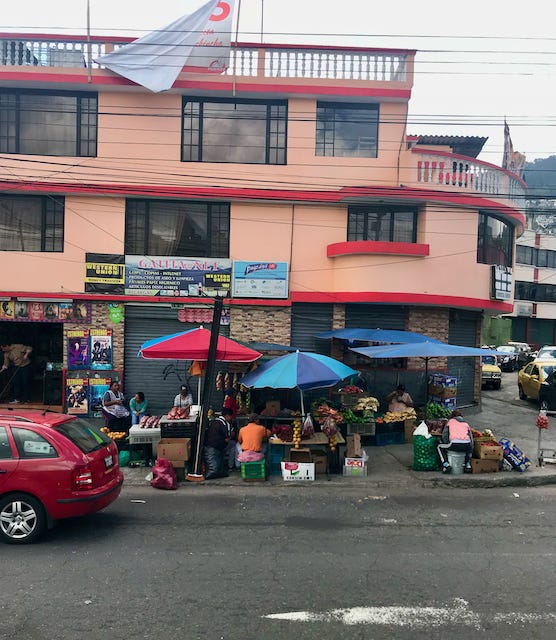
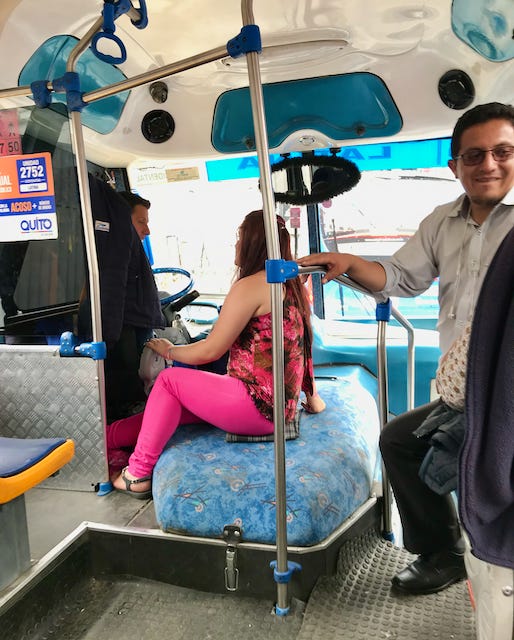
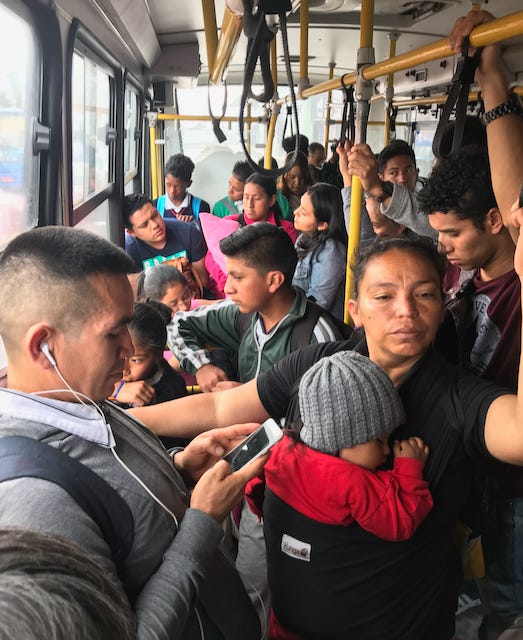
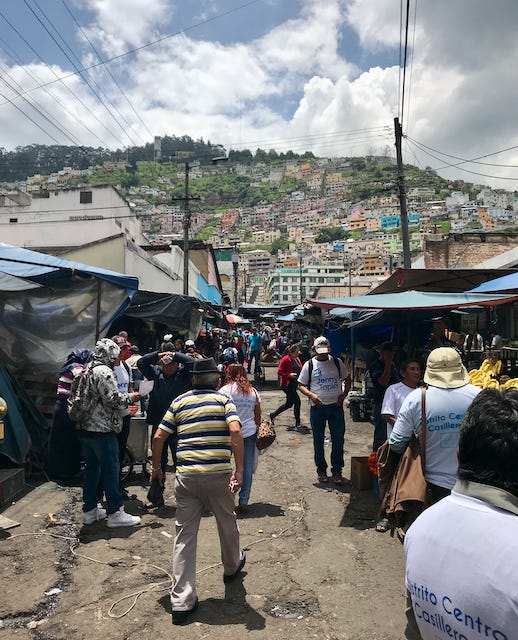
It’s also a less regulated city, where the natural ebb and flow of people, the fruit vendors’ umbrellas, or the upstairs porch of the building right next to the road, provide the shade. LA doesn’t have as much of that. It has long, straight streets lined with shopping plazas, set off from the road by extensive parking lots. Or streets of homes with large yards.

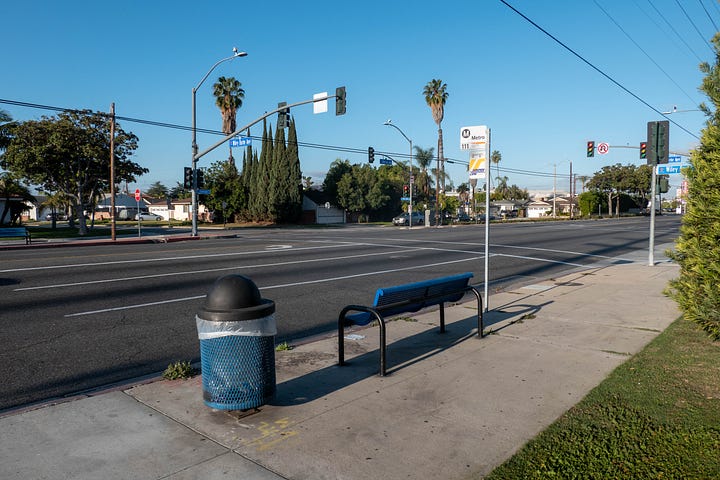
The other big issue LA is dealing with, which they won’t admit, is homelessness. They built La Sombrita, rather than a full shelter, for the same reason NYC is taking benches out of Penn Station and Port Authority — they don’t want them to be used as shelters.
The bus stop in the cover photo has dozens of homeless camping immediately around it. Including a guy sleeping on a mattress just across the street.
It’s something you see more and more in US cities. A locking down of public spaces in an attempt to deal with the growth of the homeless population and drug use.
A removal of resources for the majority, because of concerns over “misuse” of less than one percent of residents.
That isn’t to say those concerns aren’t well founded. Shelters become unusable if someone is sleeping or pissing in them, but it’s a cowardly way to cope with a problem they are otherwise not wanting to, or able to, address.
When you start comparing LA’s bus stop problem, or any other US cities, with the rest of the world you see the framework of a larger problem we are dealing with.
To get big-brained about it, something like La Sombrita could only happen in a high-regulation/low-trust society like the US. In every other variation (low regulation/high trust, high regulation/high trust, low regulation/low trust) you get either larger public works without fear of vandalism or misuse (a proper bus shelter), or like in Quito (a lower regulation society) you get natural ad hoc bottom-up solutions.
It’s only in the high-regulation low-trust society (ours), that you end up building the least to protect against the worst — the constraints of both regulations and behavior results in things the majority doesn’t want, or doesn’t find useful.
This is why there are so few new functional things in US cities and why what is built feels “cold.” Regulations limit bottom-up and top-down solutions, and then what is built has to protect against all sorts of bad behavior — limiting functionality and “warmth.”
The high-regulation part of the US is usually couched in the language of safety, but it’s really about not allowing organic growth, which is messy, but people being people, results in things the majority really wants.
Quito is the perfect example. If there is a bus stop in the middle of nowhere, without natural shade around, riders will do something like rig an umbrella to a pole, or throw some old seats under a tree. In the US those will be dismantled within days.
That rarely happens though, because in places like Quito bus stops attract street vendors, who come with umbrellas, who also bring safety by their presence. LA has some of that, but as I saw with my favorite Taco stand (near a bus stop)4, it’s against the letter of the law, and vendors are constantly hassled with fines, or shutdowns.
Germany, and much of northern Europe, is an example of a high-regulation high-trust society (compared to the US), where nice fully functional things can be built, without fear of misuse.
Turkey is an example of a low-regulation high-trust society (compared to the US), that because of less concern about new things being destroyed, is building plenty of nice new things, while also continuing to allow the bottom-up organic growth that’s defined it for so long.
The result is Istanbul is flourishing, both in material and non-material ways.
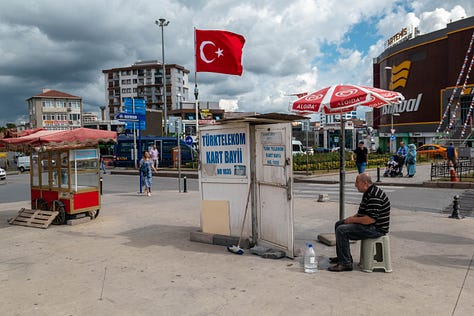
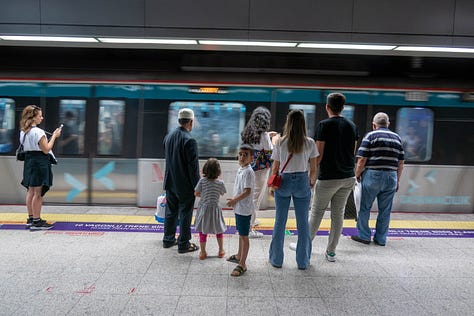
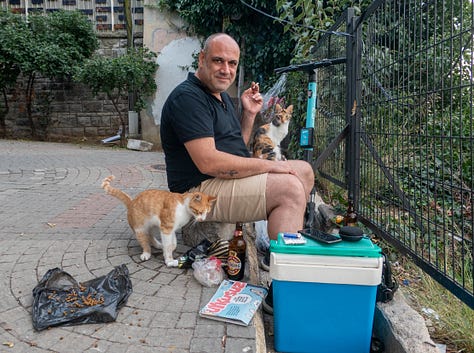
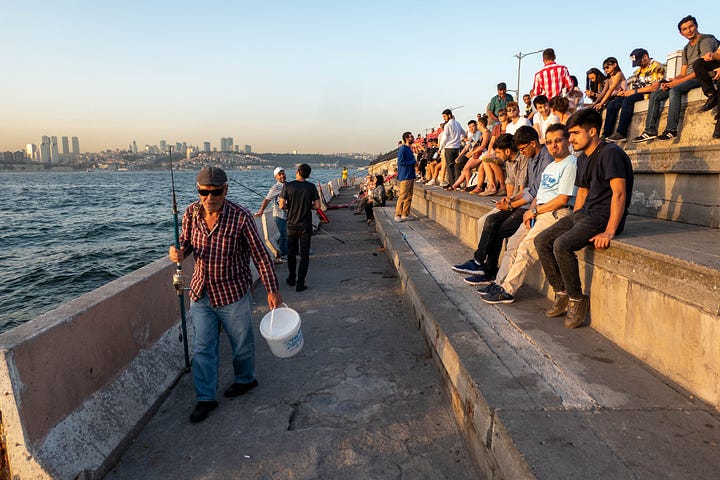
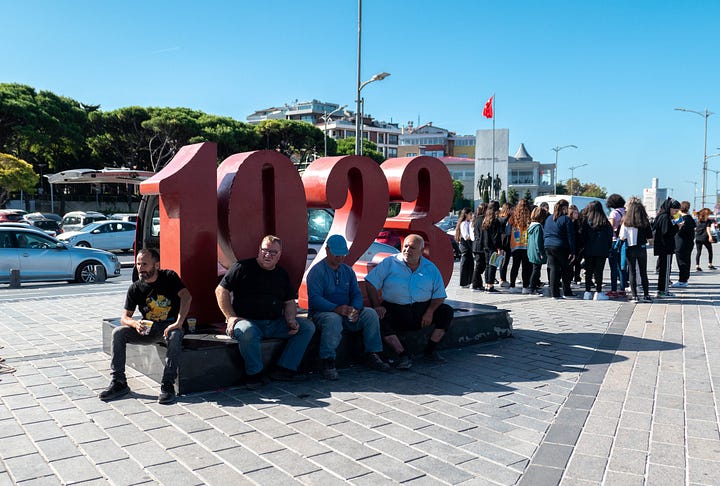
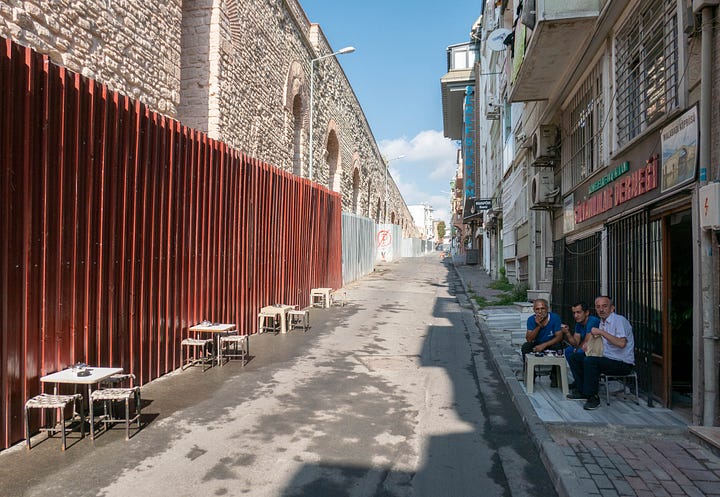
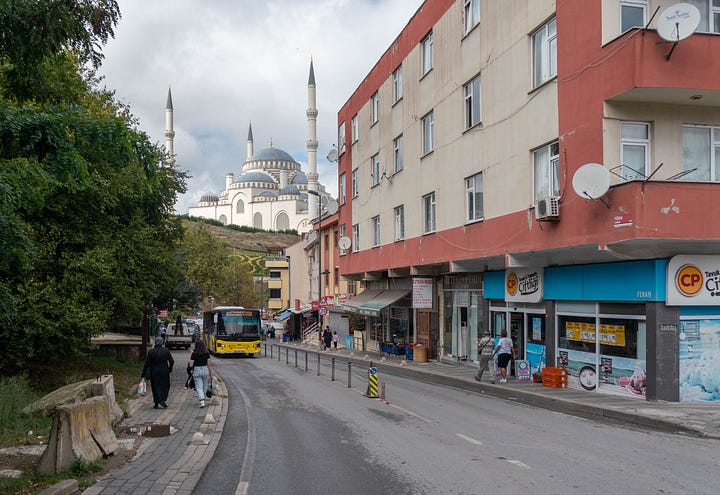
As an American it’s all rather depressing. I like to live here, but the reality is we are rapidly falling behind the rest of the world in livability, especially when you adjust for our wealth.
A growing and absurd centralized regulatory mindset, that sees human flourishing as dirty and unsafe, that seems determined to wring out the last drops of any soul, coupled with a (rational or not) mistrust of the residents to treat new things with respect is resulting in our cities being frozen in time.
Places that when they do grow, do it one useless La Sombrita at a time.
I’m not sure of the solution. This isn’t a policy blog, but rather a “see the world from street level blog,” and so I can only offer up what I see as the problem, and hope you readers, and others, can find solutions.
I am however sure that we have a problem, and unless it’s addressed, it’s not that I’m worried that more and more people are going to choose to move overseas. That’s a luxury most don’t have, or want. Rather, unless it’s addressed, we are going to continue to provide our citizens towns and cities that don’t work. That are broken. That are cold and ugly5 technocratic landscapes with slivers of shade and corners that smell of piss.
That sucks.
(Sorry for the rant, next week I promise to get back to my regularly-scheduled walking posts)
I’ve seen different numbers floating around, but honestly, the cost is less of the issue. Sure, at one level they are trying to do a fix on the cheap, but IMO it’s less about that, and more about why they proudly thought this was a good thing.
I’ve already written a lot on the newer metro systems in other countries. Especially in Taiwan.
I have only a few pictures of Quito, since I spent a month there when I was in my no-camera phase. LOL.
As I wrote in “LA without a car”, El Tacontento (8088 Slauson Ave) was shut down twice when I was there. By some city bureaucrat.
Little noted, but La Sombrita is ugly as F. Aesthetics don’t get much consideration in these utilitarian days.

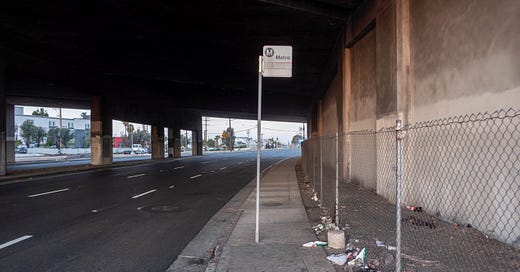



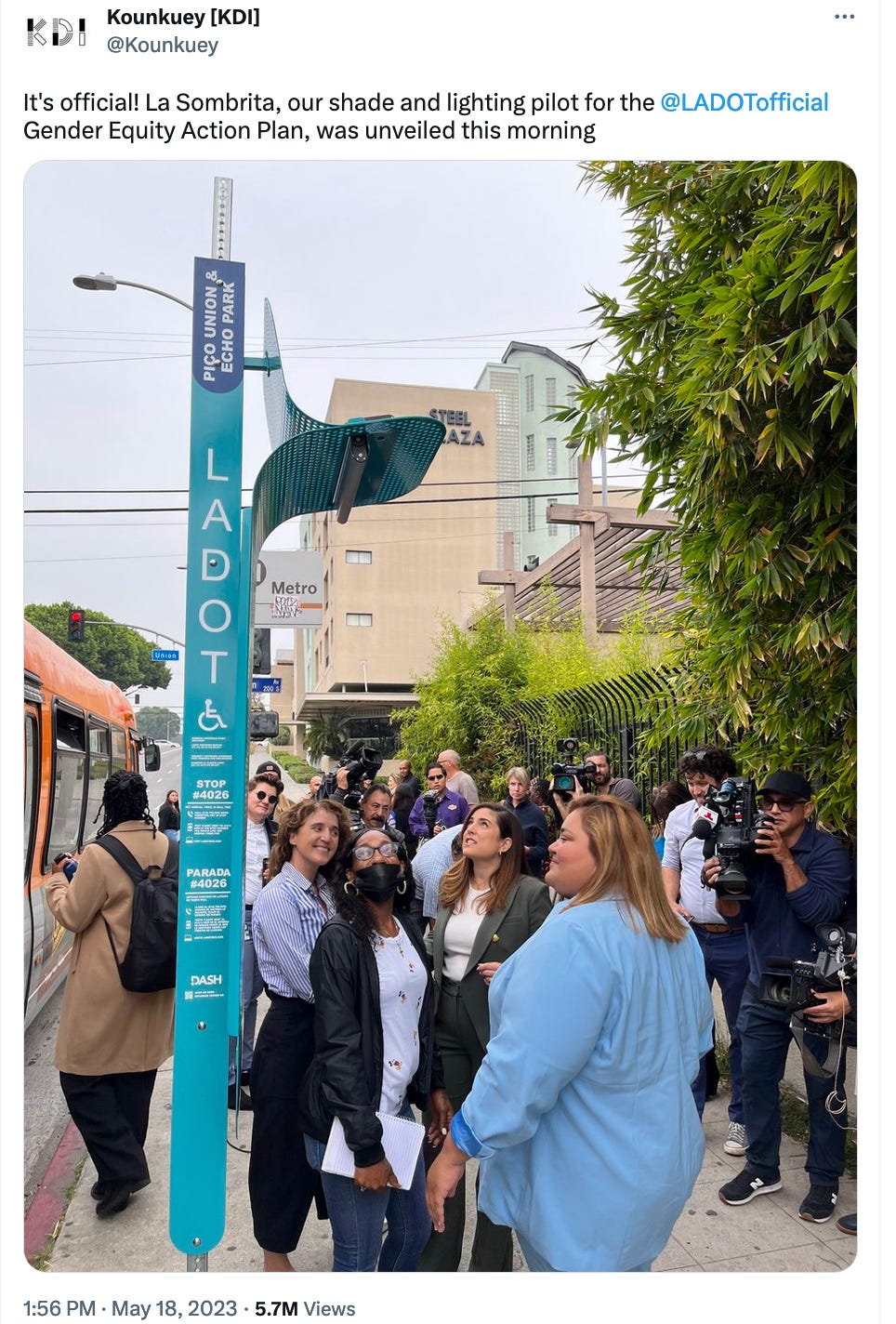

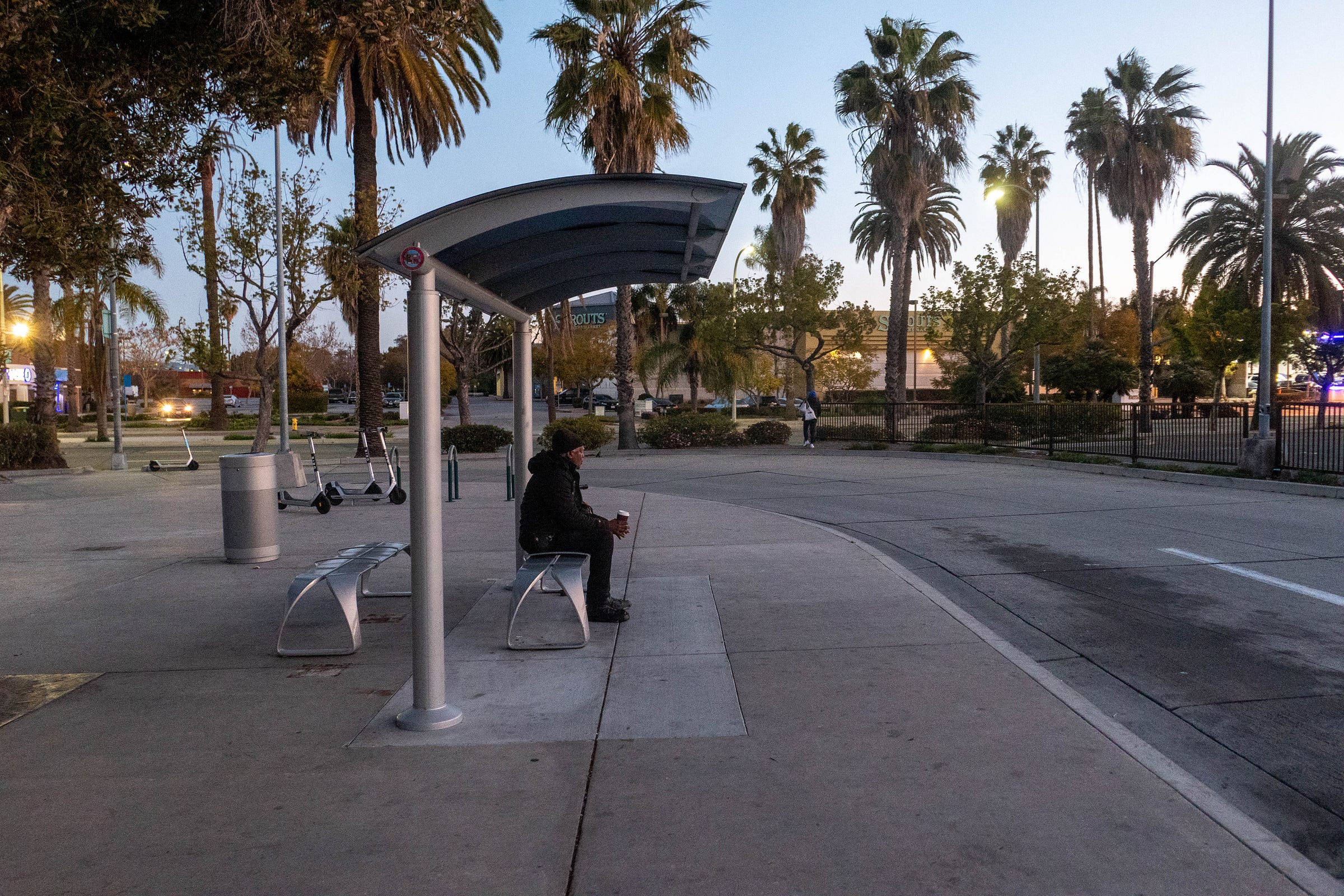
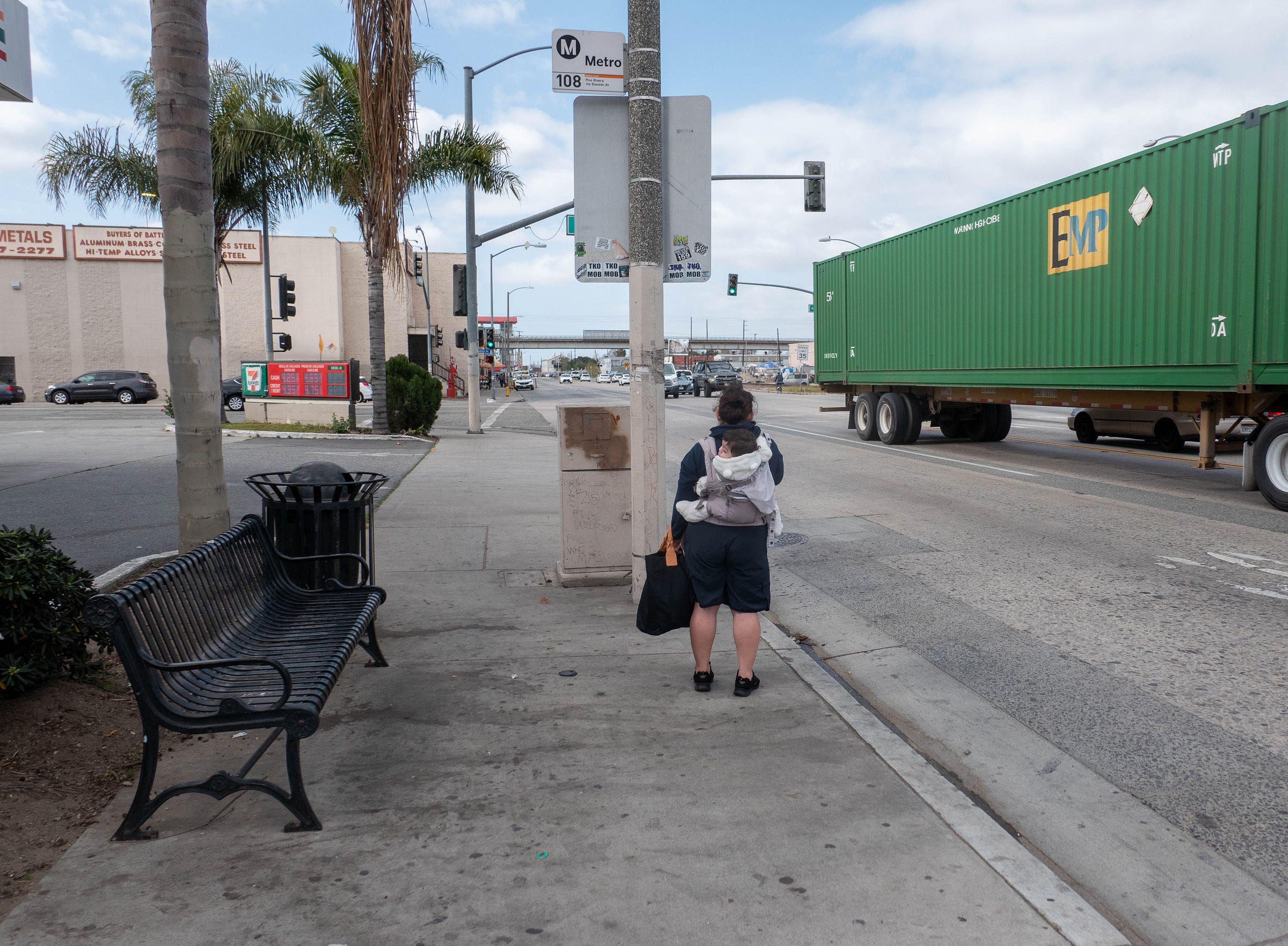
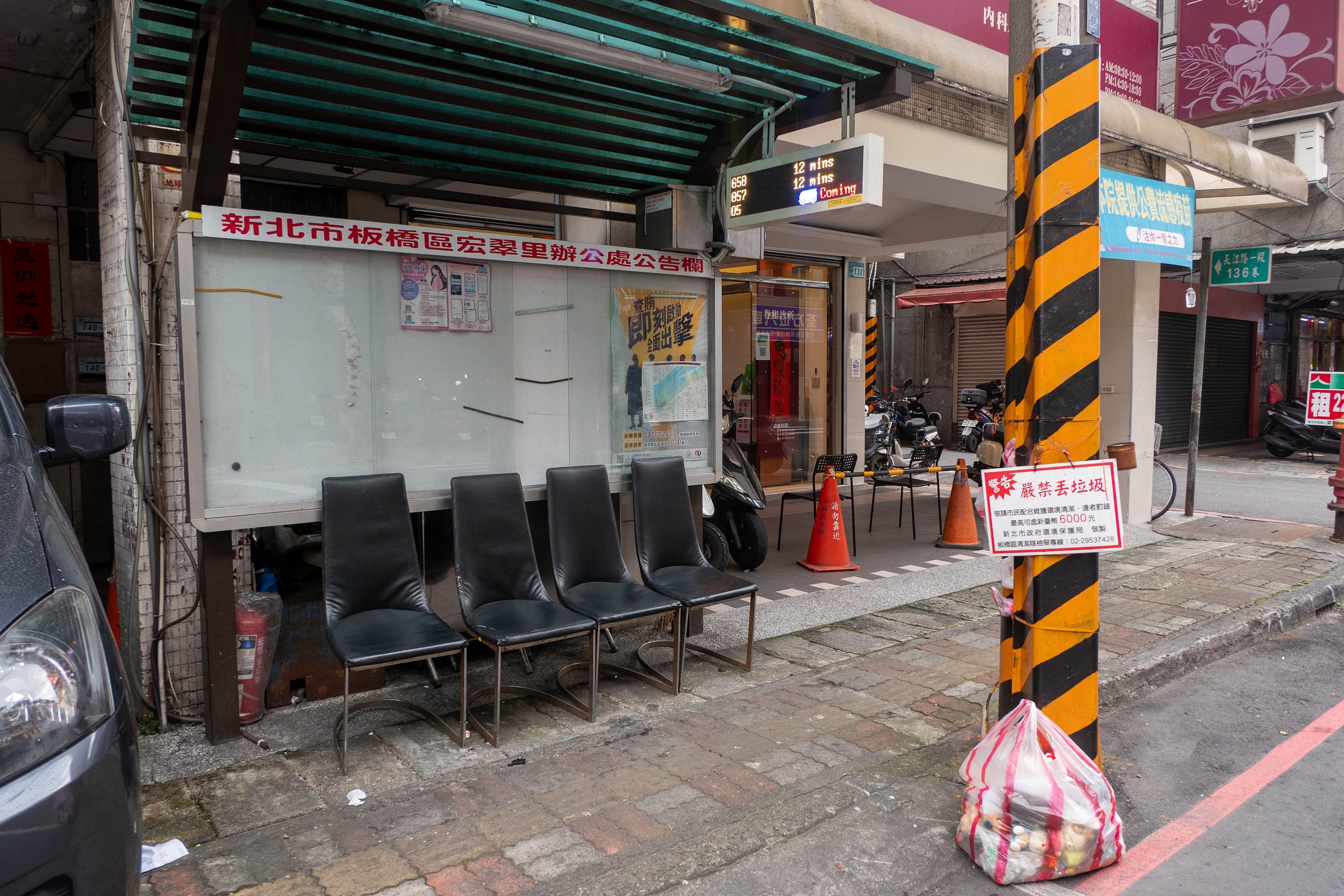
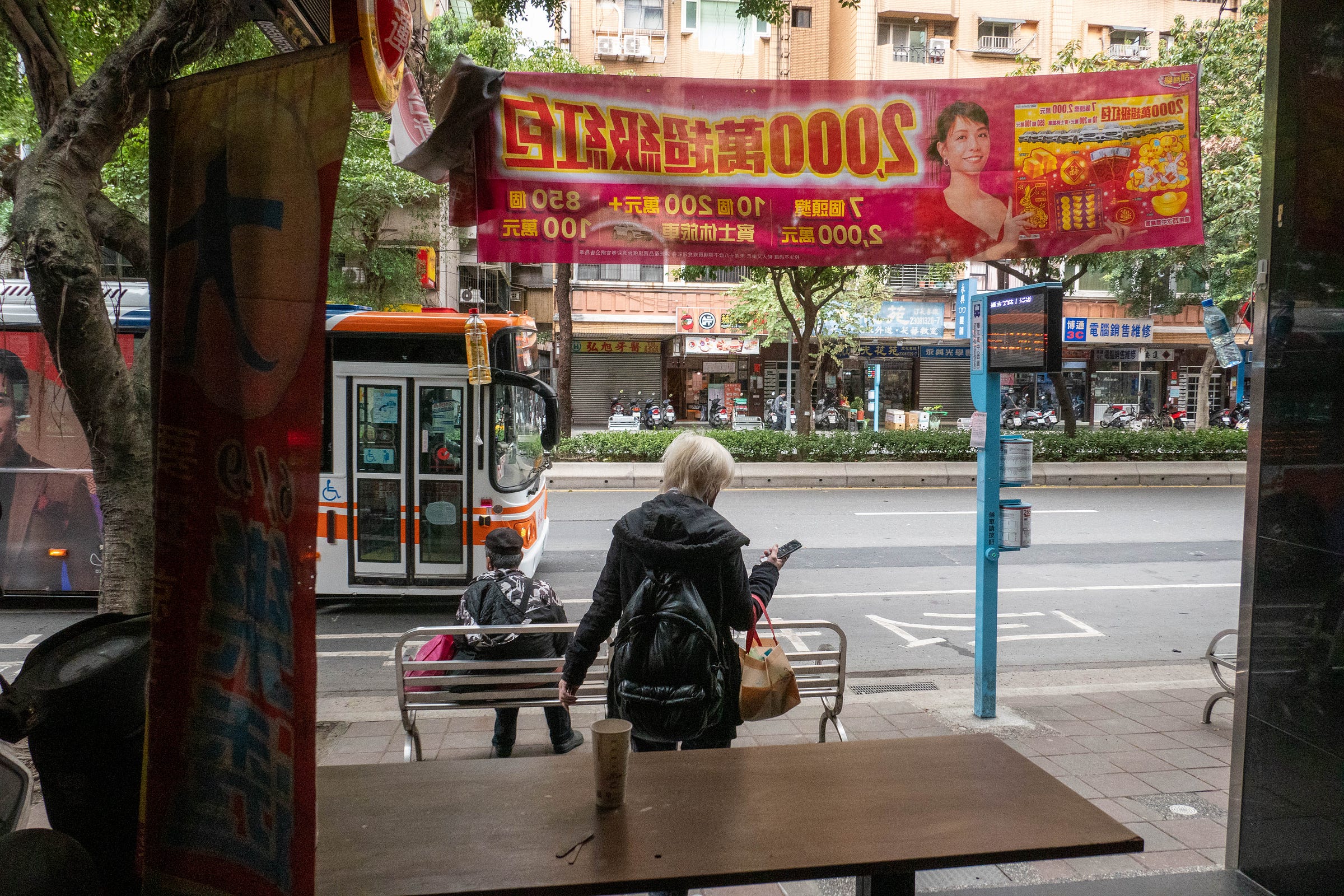
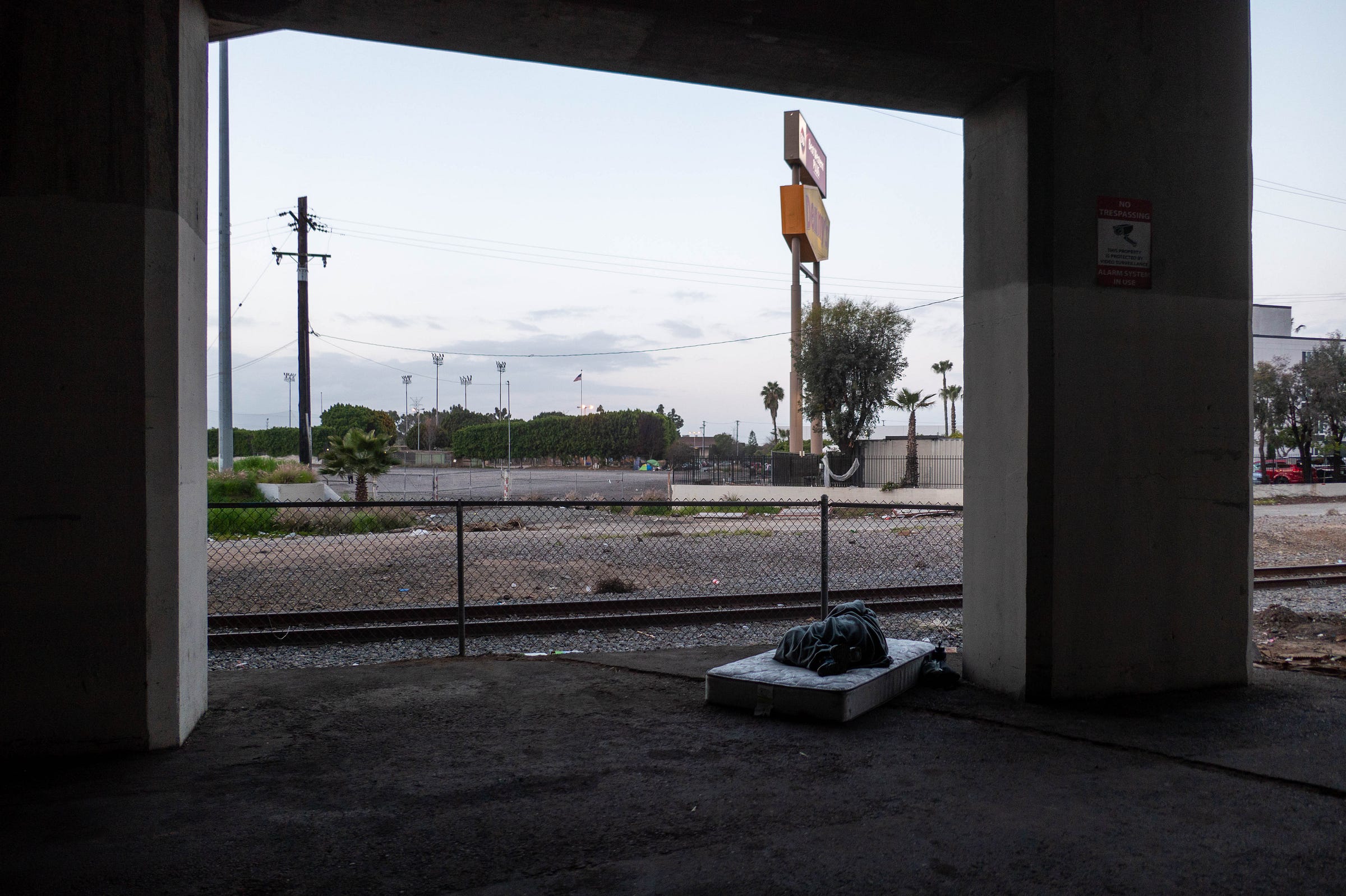
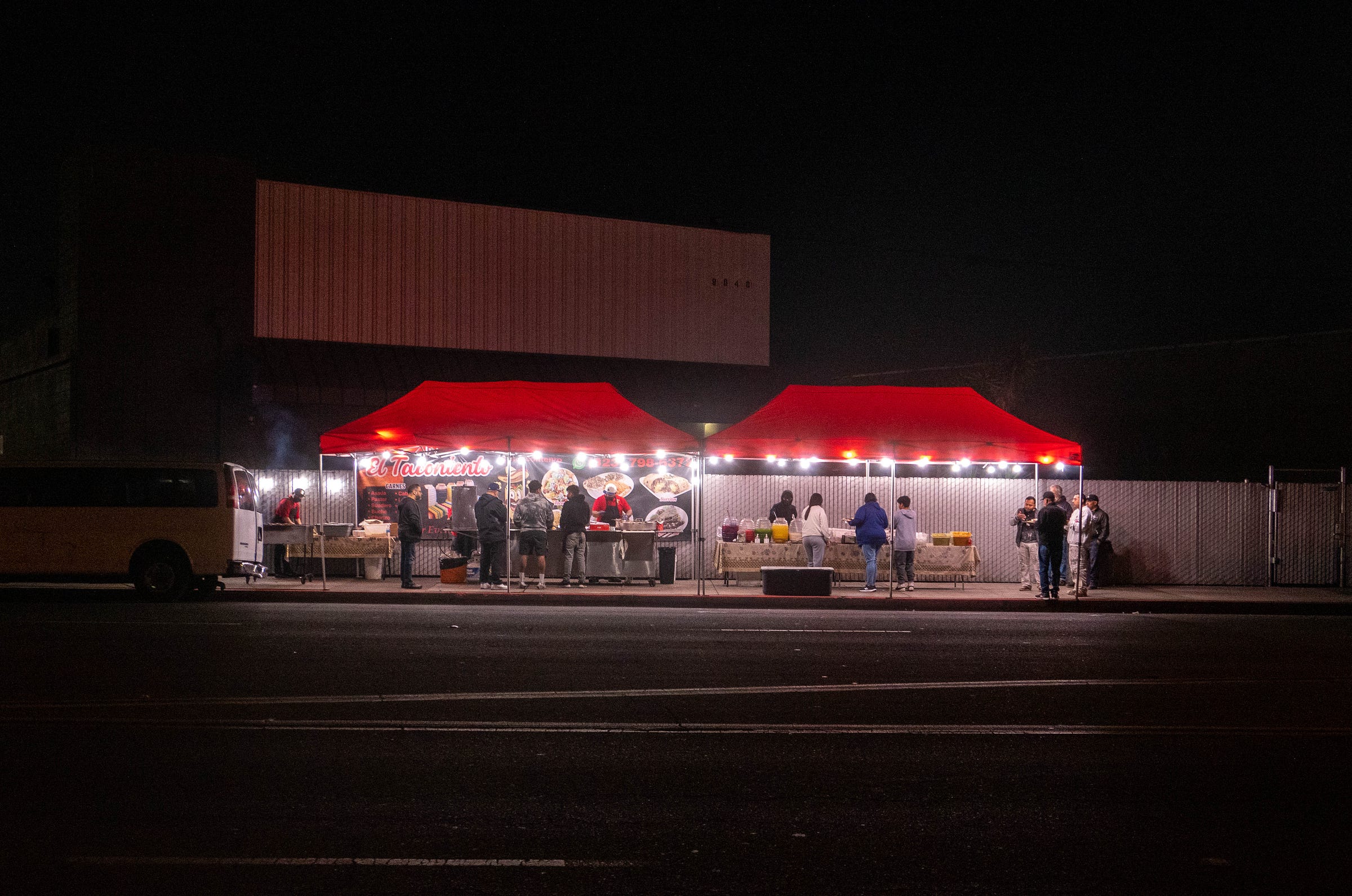

No need to apologize for your rant. All of us who live in the U.S. and have travelled widely wonder why we live so poorly.
Such an interesting framework on trust versus regulation, and high versus low. A classic 2x2.
I'm seeing this in my own upstate New York village, where there was a big fight over whether to build a dog park. The bottom up solution was owners letting their dogs run loose in an isolated corner of the park early in the morning. Lots of socializing, nobody was bothered, and people and dogs had fun.
The top down solution was building a fenced dog park. But county regulations required that the dog park be a certain size, which meant that it had to impinge on other uses, namely soccer fields. This set up a confrontation between soccer parents and dog owners.
After much acrimony, the dog park got built, but it is heavily regulated, locked up, and it's required that dog owners pay a fee and get a dog-park license or face high fines. Out-of-towners are barred. Posted on the gate is a list of 24 verbose rules written by lawyers.
Unsurprisingly, nobody's using the dog park. It's a double negative: It takes up space that could be used by soccer players, and it is deserted. Dog owners are returning to the ad hoc bottom up arrangement.
We had low trust and high regulation. Now there's even less trust and more regulation. Neighbors are at each other's throats and we have a white elephant sitting in the park.
Thank you, Chris, for giving me a framework through which to see sad events in my own hometown.